1.Identification
1.1 GHS Product identifier
| Product name | glycerol |
|---|
1.2 Other means of identification
| Product number | - |
|---|---|
| Other names | Glycerin |
1.3 Recommended use of the chemical and restrictions on use
| Identified uses | For industry use only. Solvents |
|---|---|
| Uses advised against | no data available |
1.4 Supplier's details
| Company | MOLBASE (Shanghai) Biotechnology Co., Ltd. |
|---|---|
| Address | Floor 4 & 5, Building 12, No. 1001 North Qinzhou Road, Xuhui District, Shanghai, China |
| Telephone | +86(21)64956998 |
| Fax | +86(21)54365166 |
1.5 Emergency phone number
| Emergency phone number | +86-400-6021-666 |
|---|---|
| Service hours | Monday to Friday, 9am-5pm (Standard time zone: UTC/GMT +8 hours). |
2.Hazard identification
2.1 Classification of the substance or mixture
Not classified.
2.2 GHS label elements, including precautionary statements
| Pictogram(s) | No symbol. |
|---|---|
| Signal word | No signal word. |
| Hazard statement(s) | none |
| Precautionary statement(s) | |
| Prevention | none |
| Response | none |
| Storage | none |
| Disposal | none |
2.3 Other hazards which do not result in classification
none
3.Composition/information on ingredients
3.1 Substances
| Chemical name | Common names and synonyms | CAS number | EC number | Concentration |
|---|---|---|---|---|
| glycerol | glycerol | 56-81-5 | none | 100% |
4.First-aid measures
4.1 Description of necessary first-aid measures
General advice
Consult a physician. Show this safety data sheet to the doctor in attendance.
If inhaled
Fresh air, rest.
In case of skin contact
Rinse skin with plenty of water or shower. Rinse skin with plenty of water or shower.
In case of eye contact
First rinse with plenty of water for several minutes (remove contact lenses if easily possible), then refer for medical attention.
If swallowed
Rinse mouth. Rinse mouth.
4.2 Most important symptoms/effects, acute and delayed
No hazard (USCG, 1999)
4.3 Indication of immediate medical attention and special treatment needed, if necessary
The clinician should attend to the management of dehydration, electrolyte imbalance (hypokalemia and hyponatremia), hyperglycemia, and acidosis or alkalosis. ... /Osmotic diuretics/
5.Fire-fighting measures
5.1 Extinguishing media
Suitable extinguishing media
Water or foam may cause frothing.
5.2 Specific hazards arising from the chemical
This chemical is combustible.
5.3 Special protective actions for fire-fighters
Wear self-contained breathing apparatus for firefighting if necessary.
6.Accidental release measures
6.1 Personal precautions, protective equipment and emergency procedures
Use personal protective equipment. Avoid dust formation. Avoid breathing vapours, mist or gas. Ensure adequate ventilation. Evacuate personnel to safe areas. Avoid breathing dust. For personal protection see section 8.
6.2 Environmental precautions
Ventilation. Collect leaking and spilled liquid in covered containers as far as possible. Absorb remaining liquid in sand or inert absorbent. Then store and dispose of according to local regulations.
6.3 Methods and materials for containment and cleaning up
Wear approved respiratory protection, chemically compatible gloves and protective clothing. Wipe up spillage or collect spillage using a high efficiency vacuum cleaner. Avoid breathing vapor. Place spillage in appropriately labelled container for disposal.
7.Handling and storage
7.1 Precautions for safe handling
Avoid contact with skin and eyes. Avoid formation of dust and aerosols. Avoid exposure - obtain special instructions before use.Provide appropriate exhaust ventilation at places where dust is formed. For precautions see section 2.2.
7.2 Conditions for safe storage, including any incompatibilities
Separated from strong oxidants.Glycerol should preferably be stored at 40 - 60°C under nitrogen blanketing. It is not corrosive and presents little risk of ignition because of its high flash point. Highly concentrated glycerol does not corrode steel, but storage tanks of carbon steel must be protected by surface coating to prevent rusting by residual moisture. Glycerol is therefore usually stored in tanks of stainless steel or aluminum.
8.Exposure controls/personal protection
8.1 Control parameters
Occupational Exposure limit values
NIOSH concluded that the documentation cited by OSHA was inadequate to support the proposed PEL (as an 8 hour TWA) of 10 mg/cu m for glycerine (mist).
Biological limit values
no data available
8.2 Appropriate engineering controls
Handle in accordance with good industrial hygiene and safety practice. Wash hands before breaks and at the end of workday.
8.3 Individual protection measures, such as personal protective equipment (PPE)
Eye/face protection
Safety glasses with side-shields conforming to EN166. Use equipment for eye protection tested and approved under appropriate government standards such as NIOSH (US) or EN 166(EU).
Skin protection
Wear impervious clothing. The type of protective equipment must be selected according to the concentration and amount of the dangerous substance at the specific workplace. Handle with gloves. Gloves must be inspected prior to use. Use proper glove removal technique(without touching glove's outer surface) to avoid skin contact with this product. Dispose of contaminated gloves after use in accordance with applicable laws and good laboratory practices. Wash and dry hands. The selected protective gloves have to satisfy the specifications of EU Directive 89/686/EEC and the standard EN 374 derived from it.
Respiratory protection
Wear dust mask when handling large quantities.
Thermal hazards
no data available
9.Physical and chemical properties
| Physical state | Clear, colorless, viscous liquid |
|---|---|
| Colour | Syrupy, rhombic plates |
| Odour | MILD ODOR |
| Melting point/ freezing point | -55°C(lit.) |
| Boiling point or initial boiling point and boiling range | 182°C/20mmHg(lit.) |
| Flammability | Class IIIB Combustible Liquid: Fl.P. at or above 93.33°C.Combustible. Gives off irritating or toxic fumes (or gases) in a fire. |
| Lower and upper explosion limit / flammability limit | no data available |
| Flash point | 160°C |
| Auto-ignition temperature | 370°C |
| Decomposition temperature | no data available |
| pH | Neutral to litmus |
| Kinematic viscosity | 954 CENTIPOISES AT 25 DEG C; 17 CENTIPOISES AT 25 DEG C (70% SOLN) |
| Solubility | In water:>500 g/L (20 ºC) |
| Partition coefficient n-octanol/water (log value) | log Kow = -1.76 |
| Vapour pressure | <1 mm Hg ( 20 °C) |
| Density and/or relative density | 1.25g/mL(lit.) |
| Relative vapour density | 3.1 (vs air) |
| Particle characteristics | no data available |
10.Stability and reactivity
10.1 Reactivity
no data available
10.2 Chemical stability
Mixtures of glycerin with water, ethanol (95%), and propylene glycol are chemically stable. Glycerin may crystallize if stored at low temperatures; the crystals do not melt until warmed to 20°C.
10.3 Possibility of hazardous reactions
GLYCERINE is incompatible with strong oxidizers. It is also incompatible with hydrogen peroxide, potassium permanganate, nitric acid + sulfuric acid, perchloric acid + lead oxide, acetic anhydride, aniline + nitrobenzene, Ca(OCl)2, CrO3, F2 + PbO, KMnO4, K2O2, AgClO4 and NaH. A mixture with chlorine explodes if heated to 158-80°C. It reacts with acetic acid, potassium peroxide, sodium peroxide, hydrochloric acid, (HClO4 + PbO) and Na2O2. Contact with potassium chlorate may be explosive. It also reacts with ethylene oxide, perchloric acid, nitric acid + hydrofluoric acid and phosphorus triiodide.
10.4 Conditions to avoid
no data available
10.5 Incompatible materials
Exothermic interaction of granular /sodium/ hydride with undiluted (viscous) glycerol with inadequate stirring caused charring to occur.
10.6 Hazardous decomposition products
Pure gycerin is not prone to oxidation by the atmosphere under ordinary conditions, but is decomposes on heating with the evolution of toxic acrolein.
11.Toxicological information
Acute toxicity
- Oral: LD50 Rat oral 12.6 g/kg
- Inhalation: LC50 Rat inhalation > 570 mg/cu m/1 hr
- Dermal: no data available
Skin corrosion/irritation
no data available
Serious eye damage/irritation
no data available
Respiratory or skin sensitization
no data available
Germ cell mutagenicity
no data available
Carcinogenicity
no data available
Reproductive toxicity
no data available
STOT-single exposure
no data available
STOT-repeated exposure
no data available
Aspiration hazard
no data available
12.Ecological information
12.1 Toxicity
- Toxicity to fish: no data available
- Toxicity to daphnia and other aquatic invertebrates: LC50; Species: Daphnia magna (Water flea, age < or = 24 hr); Conditions: freshwater, static, 20-22°C; Concentration: >10000 mg/L for 24 hr /formulated product
- Toxicity to algae: Toxicity threshold (cell multiplication inhibition test) Algae (Microcystis aeruginosa) 2900 mg/l
- Toxicity to microorganisms: no data available
12.2 Persistence and degradability
AEROBIC: Glycerin, present at 100 mg/L, reached 63% of its theoretical BOD in 2 weeks using an activated sludge inoculum at 30 mg/L in the Japanese MITI test(1). Biodegradation rate constants of 0.258/day and 0.200/day in respirometric test systems employing activated sludge have also been reported, corresponding to 68% and 78% degradation, respectively(2).
12.3 Bioaccumulative potential
An estimated BCF of 3 was calculated in fish for glycerin(SRC), using a log Kow of -1.76(1) and a regression-derived equation(2). According to a classification scheme(3), this BCF suggests the potential for bioconcentration in aquatic organisms is low(SRC).
12.4 Mobility in soil
Using a structure estimation method based on molecular connectivity indices(1), the Koc of glycerin can be estimated to be 1(SRC). According to a classification scheme(2), this estimated Koc value suggests that glycerin is expected to have very high mobility in soil.
12.5 Other adverse effects
no data available
13.Disposal considerations
13.1 Disposal methods
Product
The material can be disposed of by removal to a licensed chemical destruction plant or by controlled incineration with flue gas scrubbing. Do not contaminate water, foodstuffs, feed or seed by storage or disposal. Do not discharge to sewer systems.
Contaminated packaging
Containers can be triply rinsed (or equivalent) and offered for recycling or reconditioning. Alternatively, the packaging can be punctured to make it unusable for other purposes and then be disposed of in a sanitary landfill. Controlled incineration with flue gas scrubbing is possible for combustible packaging materials.
14.Transport information
14.1 UN Number
| ADR/RID: Not dangerous goods. | IMDG: Not dangerous goods. | IATA: Not dangerous goods. |
14.2 UN Proper Shipping Name
| ADR/RID: unknown |
| IMDG: unknown |
| IATA: unknown |
14.3 Transport hazard class(es)
| ADR/RID: Not dangerous goods. | IMDG: Not dangerous goods. | IATA: Not dangerous goods. |
14.4 Packing group, if applicable
| ADR/RID: Not dangerous goods. | IMDG: Not dangerous goods. | IATA: Not dangerous goods. |
14.5 Environmental hazards
| ADR/RID: no | IMDG: no | IATA: no |
14.6 Special precautions for user
no data available
14.7 Transport in bulk according to Annex II of MARPOL 73/78 and the IBC Code
no data available
15.Regulatory information
15.1 Safety, health and environmental regulations specific for the product in question
| Chemical name | Common names and synonyms | CAS number | EC number |
|---|---|---|---|
| glycerol | glycerol | 56-81-5 | none |
| European Inventory of Existing Commercial Chemical Substances (EINECS) | Listed. | ||
| EC Inventory | Listed. | ||
| United States Toxic Substances Control Act (TSCA) Inventory | Listed. | ||
| China Catalog of Hazardous chemicals 2015 | Not Listed. | ||
| New Zealand Inventory of Chemicals (NZIoC) | Listed. | ||
| Philippines Inventory of Chemicals and Chemical Substances (PICCS) | Listed. | ||
| Vietnam National Chemical Inventory | Listed. | ||
| Chinese Chemical Inventory of Existing Chemical Substances (China IECSC) | Listed. | ||
16.Other information
Information on revision
| Creation Date | Aug 12, 2017 |
|---|---|
| Revision Date | Aug 12, 2017 |
Abbreviations and acronyms
- CAS: Chemical Abstracts Service
- ADR: European Agreement concerning the International Carriage of Dangerous Goods by Road
- RID: Regulation concerning the International Carriage of Dangerous Goods by Rail
- IMDG: International Maritime Dangerous Goods
- IATA: International Air Transportation Association
- TWA: Time Weighted Average
- STEL: Short term exposure limit
- LC50: Lethal Concentration 50%
- LD50: Lethal Dose 50%
- EC50: Effective Concentration 50%
References
- IPCS - The International Chemical Safety Cards (ICSC), website: http://www.ilo.org/dyn/icsc/showcard.home
- HSDB - Hazardous Substances Data Bank, website: https://toxnet.nlm.nih.gov/newtoxnet/hsdb.htm
- IARC - International Agency for Research on Cancer, website: http://www.iarc.fr/
- eChemPortal - The Global Portal to Information on Chemical Substances by OECD, website: http://www.echemportal.org/echemportal/index?pageID=0&request_locale=en
- CAMEO Chemicals, website: http://cameochemicals.noaa.gov/search/simple
- ChemIDplus, website: http://chem.sis.nlm.nih.gov/chemidplus/chemidlite.jsp
- ERG - Emergency Response Guidebook by U.S. Department of Transportation, website: http://www.phmsa.dot.gov/hazmat/library/erg
- Germany GESTIS-database on hazard substance, website: http://www.dguv.de/ifa/gestis/gestis-stoffdatenbank/index-2.jsp
- ECHA - European Chemicals Agency, website: https://echa.europa.eu/


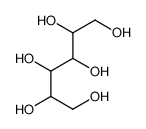

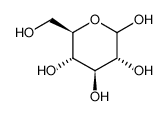



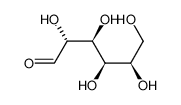
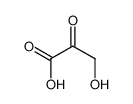
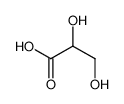
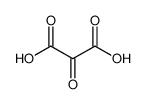










-
-

-
-
-

-
-
-

-
-
-

-
-
-
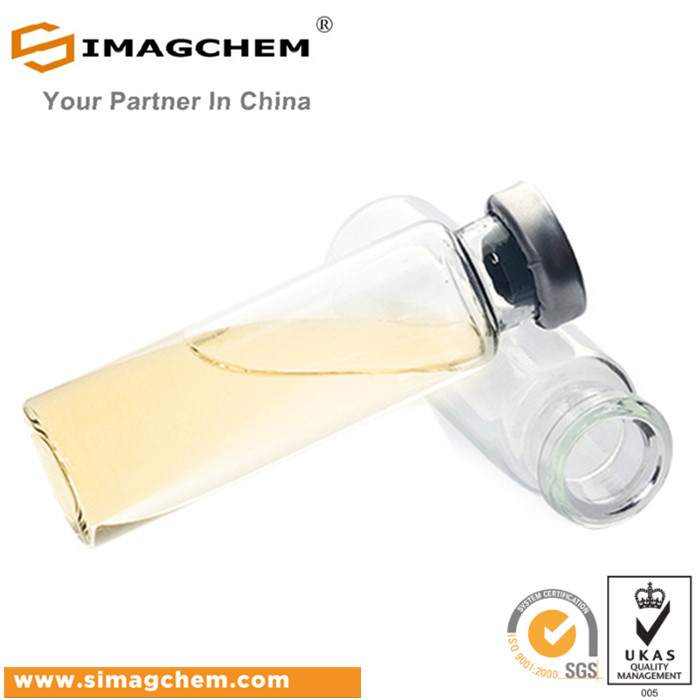
-
-
-

-
-
-

-
-
-

-
-
-

-
-
-

-
More Suppliers>>Baoji Guokang Bio-Technology Co., Ltd
CHINA
Purity: 99%
Lead Time: 5 Day(s)
Price: Min $350 /kg
Changzhou Xinxinglian Biotechnology Co., Ltd.
CHINA
Purity: 98%
Lead Time: 7 Day(s)
Price: -
Wenzhou Win-Win Chemical Co., Ltd.
CHINA
Purity: 98%
Lead Time: 3 Day(s)
Price: -
Hangzhou J&H Chemical Co., Ltd.
CHINA
Purity: 98%
Lead Time: 14 Day(s)
Price: -
Xiamen Zhixin Chemical Co., Ltd.
CHINA
Purity: 99%
Lead Time: 3 Day(s)
Price: -
CHINA
Purity: 99%
Lead Time: 14 Day(s)
Price: -
Shanghai Jizhi Biochemical Technology Co., Ltd.
CHINA
Purity: 99% EP,BP,JP,USP级%
Lead Time: 1 Week(s)
Price: -
Hubei Qifei Pharmaceutical Chemical Co., Ltd.
CHINA
Purity: 0.99%
Lead Time: 1 Day(s)
Price: -
Skyrun Industrial Co., Limited
CHINA
Purity: 99%
Lead Time: 7 Day(s)
Price: -
Changzhou hongyu Chemical ,.LTD
CHINA
Purity: 99.90000000000001%
Lead Time: 2 Day(s)
Price: -